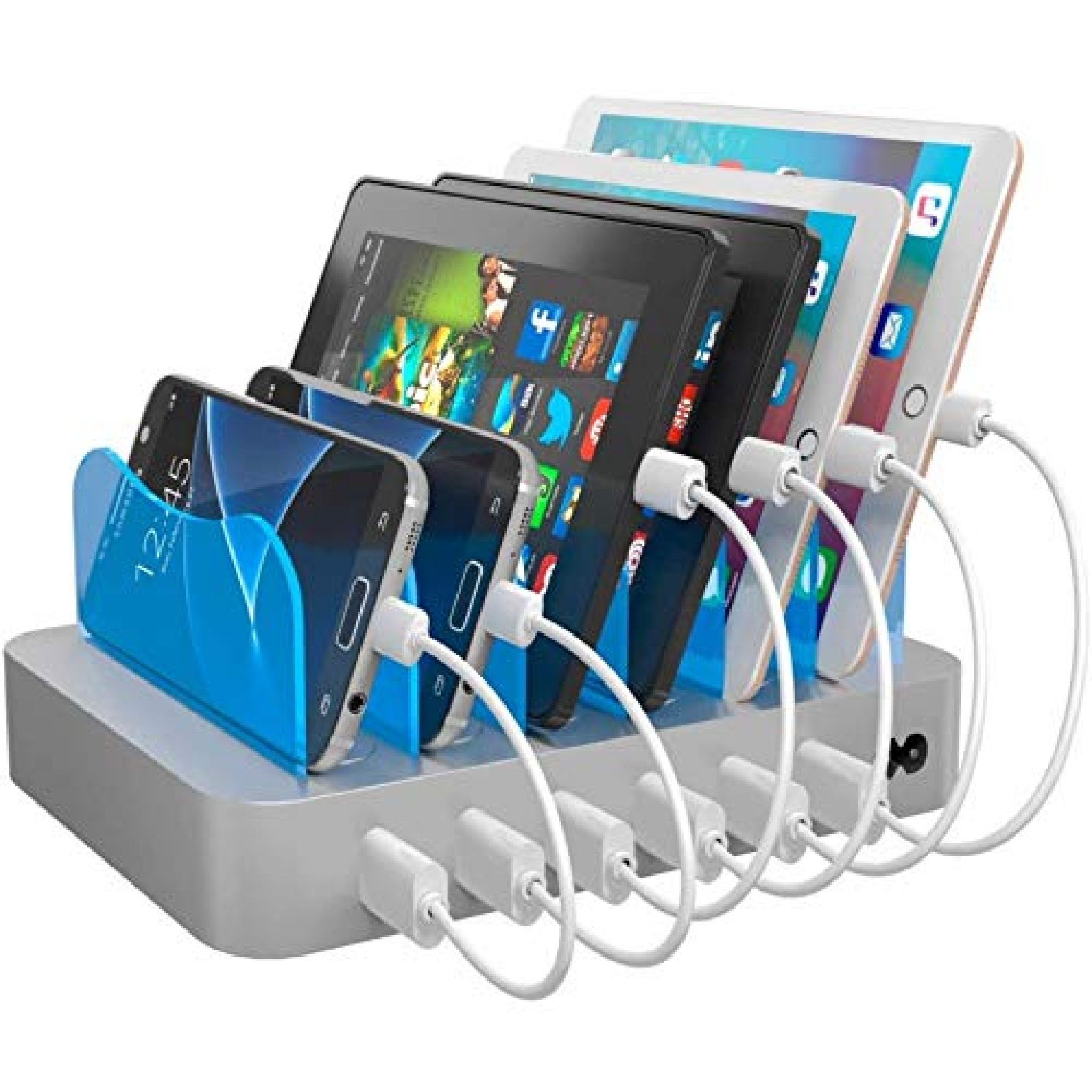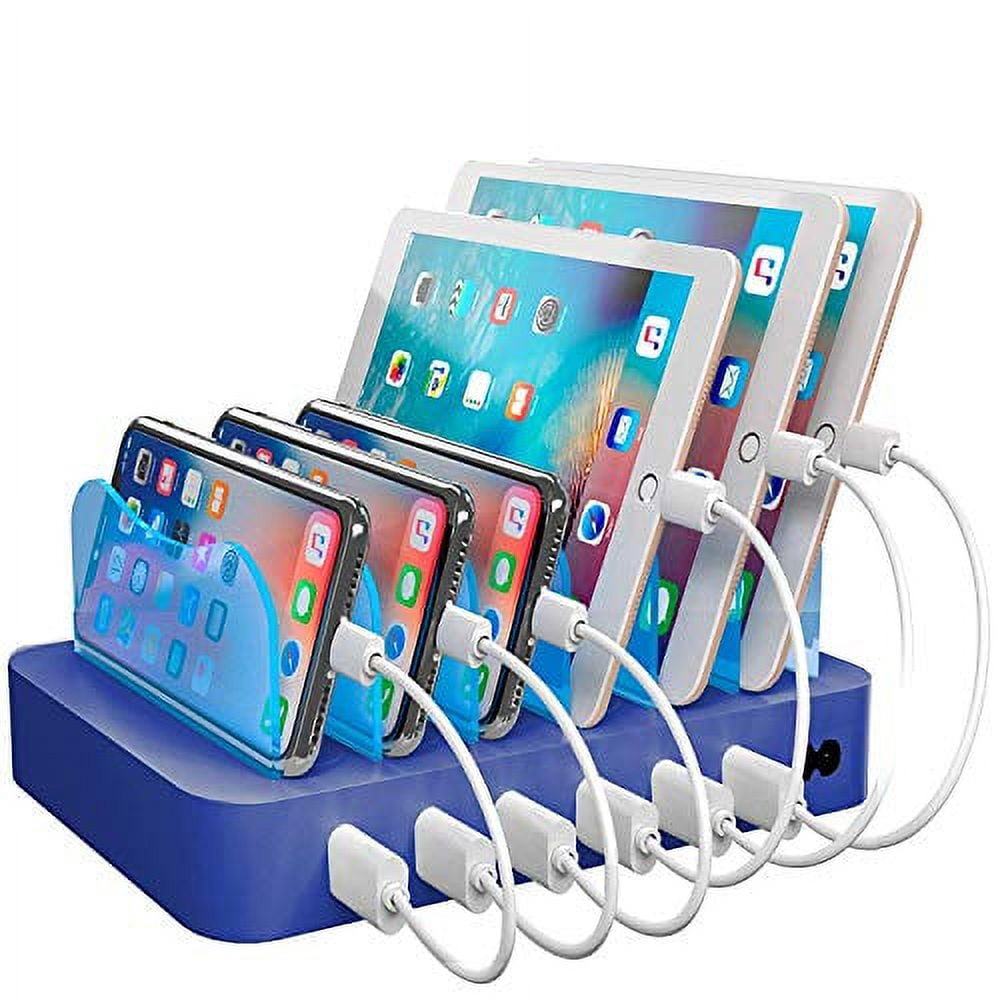Portable Charging Station For Multiple Devices

In an increasingly hyper-connected world, the bane of modern existence is the dreaded "low battery" notification. This persistent anxiety has fueled a surge in demand for portable charging solutions, and a new contender is emerging to address the needs of multi-device users: portable charging stations capable of powering multiple gadgets simultaneously. This technology promises to streamline the charging experience, but its widespread adoption hinges on factors like cost, efficiency, and safety.
This article explores the rise of portable charging stations for multiple devices, analyzing their functionality, benefits, drawbacks, and future prospects. We delve into the technical specifications, market trends, and potential impacts of these devices on consumer behavior and environmental sustainability. Furthermore, we consider the perspectives of manufacturers, consumers, and industry experts to provide a comprehensive overview of this evolving technology.
The Rise of Multi-Device Charging
The modern individual juggles a multitude of electronic devices. Smartphones, tablets, laptops, smartwatches, and wireless earbuds all demand regular charging, often simultaneously. This creates a need for solutions that can efficiently manage the power requirements of multiple devices without requiring multiple power outlets or individual chargers.
Portable charging stations are stepping in to fill this void. These devices typically feature a high-capacity battery pack and multiple charging ports (USB-A, USB-C, and sometimes AC outlets) to power several devices at once. Some models even incorporate wireless charging pads for added convenience.
Technical Specifications and Functionality
Portable charging stations vary significantly in terms of capacity, output power, and port configuration. Capacity is measured in milliampere-hours (mAh) or watt-hours (Wh) and determines how many times a device can be fully charged. Output power, measured in watts (W), dictates the speed at which devices can be charged.
USB-C ports with Power Delivery (PD) technology are increasingly common, offering faster charging speeds for compatible devices. Some stations also include AC outlets, allowing users to power laptops and other appliances directly from the charging station.
Safety features are also crucial, including overcharge protection, short-circuit protection, and temperature control. Reputable manufacturers often include certifications from organizations like UL (Underwriters Laboratories) to ensure product safety.
Benefits and Drawbacks
The primary benefit of a portable charging station is convenience. Users can charge multiple devices simultaneously without being tethered to a wall outlet. This is particularly useful during travel, outdoor activities, or power outages.
These stations can also declutter workspaces by eliminating the need for multiple individual chargers. This helps streamline cable management and create a more organized environment.
However, there are also drawbacks to consider. Portable charging stations can be bulky and heavy, making them less portable than smaller power banks. They also tend to be more expensive than single-device chargers.
The charging speed can be a limiting factor if the station's output power is insufficient to meet the demands of all connected devices. Some devices may charge more slowly or not charge at all if the power is distributed across multiple ports.
Market Trends and Competition
The market for portable charging solutions is highly competitive, with numerous manufacturers vying for market share. Established brands like Anker, Goal Zero, and Jackery are prominent players, offering a range of products to suit different needs and budgets. Newer companies are also entering the market with innovative designs and features.
The demand for higher capacity and faster charging speeds is driving innovation in the industry. Manufacturers are incorporating advanced battery technologies, such as lithium iron phosphate (LiFePO4), to improve performance and safety.
Wireless charging is also becoming increasingly prevalent, allowing users to charge compatible devices without the need for cables. This feature adds convenience but can sometimes be less efficient than wired charging.
Impact on Consumer Behavior and Sustainability
Portable charging stations are changing the way people interact with their electronic devices. The ability to charge multiple devices on the go empowers users to stay connected and productive regardless of their location. This can lead to increased reliance on technology and a shift in work habits.
From a sustainability perspective, portable charging stations have both positive and negative implications. By consolidating charging needs into a single device, they can reduce the number of individual chargers required, potentially minimizing electronic waste.
However, the manufacturing and disposal of these stations also contribute to environmental concerns. The batteries used in these devices contain materials that can be harmful to the environment if not properly recycled. Consumers should prioritize purchasing stations from manufacturers that prioritize sustainability and offer recycling programs.
Future Prospects
The future of portable charging stations looks promising, with ongoing advancements in battery technology, wireless charging, and power management. We can expect to see smaller, lighter, and more powerful stations in the years to come.
Integration with smart home systems and renewable energy sources is another potential avenue for development. Imagine a charging station that automatically recharges itself using solar power or integrates seamlessly with your smart home's energy management system.
As the demand for portable power continues to grow, portable charging stations will likely become an increasingly essential part of our tech ecosystem, shaping the way we live, work, and interact with the world around us. The key will be balancing convenience with environmental responsibility to ensure a sustainable future for this technology.
















![Portable Charging Station For Multiple Devices 12 Best Multi-Device Charging Stations [Android and iOS]](https://geekflare.com/wp-content/uploads/2022/10/ALLCACA-Wireless-Charging-Station-1.png)

